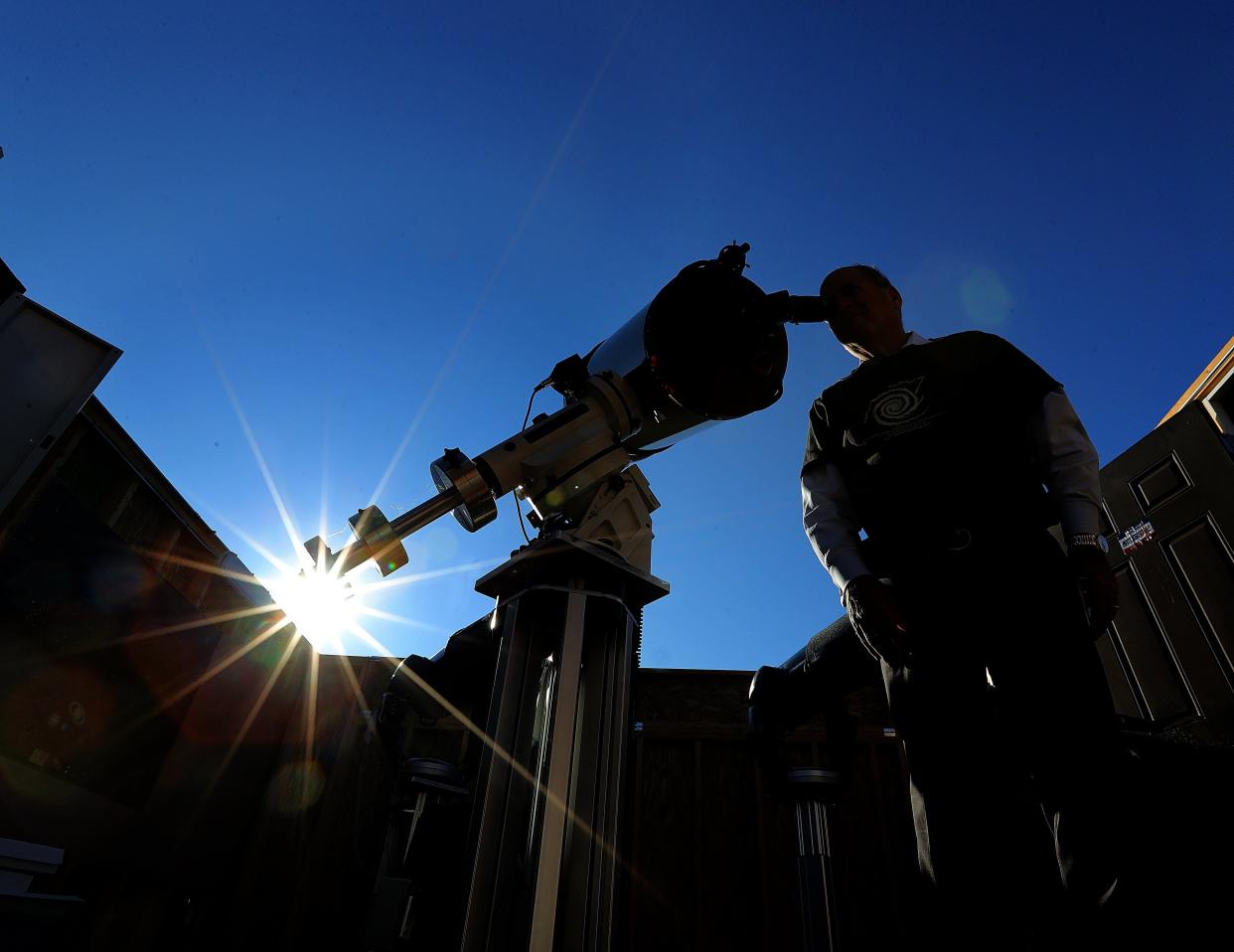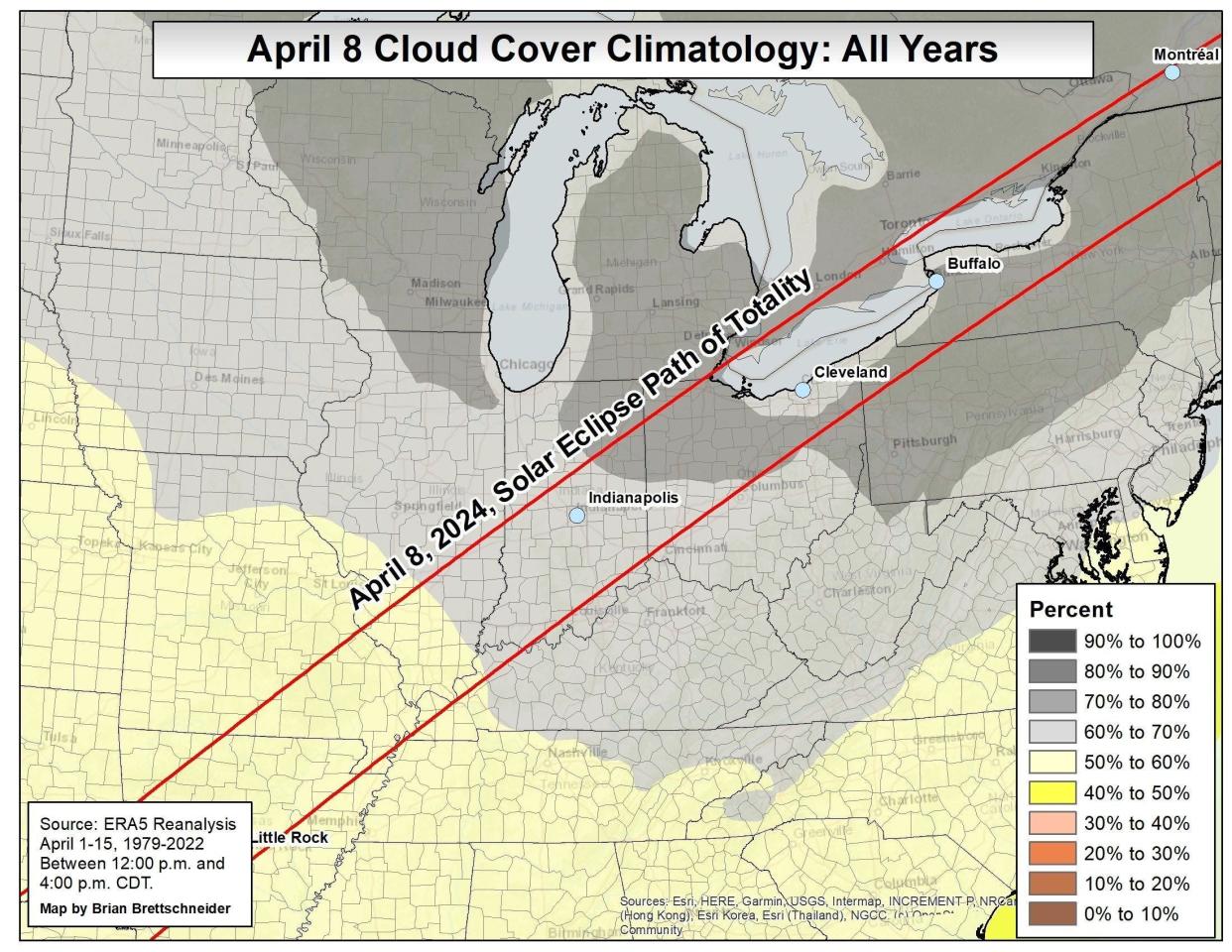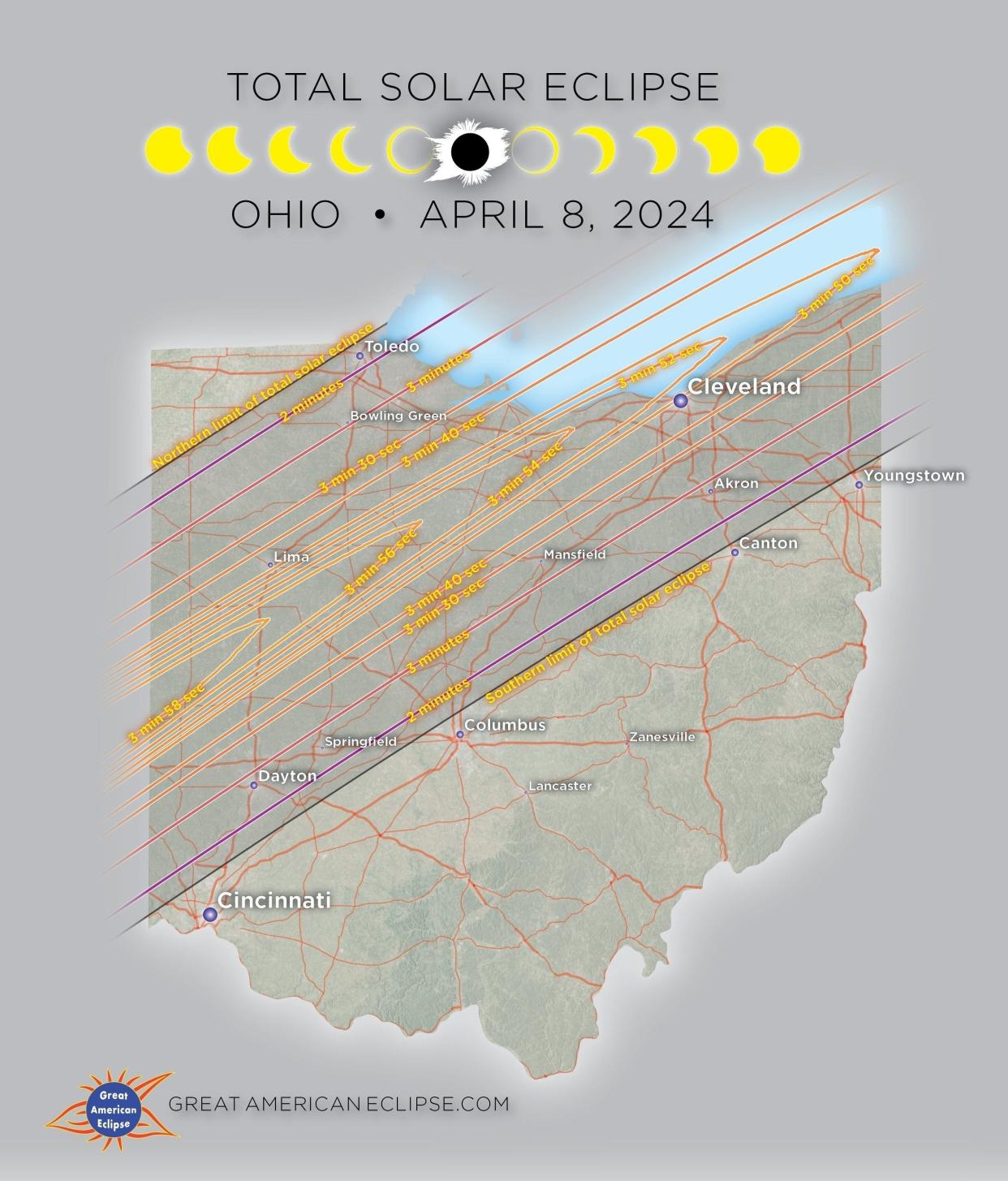What will weather be like on total eclipse day? Historically April 8 is not-so sunny in Akron

Dry.
Rain.
Rain.
Rain.
Dry.
And that's just the last five years when it comes to weather in Greater Akron on April 8 − the day of total solar eclipse.
The next five years of weather data compiled by the National Weather Service are not much more promising for the once-in-a-lifetime celestial event in Greater Akron. It either rained or snowed on all but one April 8ths.
But weather officials say this doesn't necessarily mean the day will be a total washout or with a sky full of clouds when the total eclipse hits its peak of totality around 3:15 p.m. in Greater Akron.
Weather conditions in northern Ohio can change by the minute, particularly in April.
Another thing to keep in mind, the weather service says, is northern Ohio is coming off a so-called El Niño winter that has meant overall warmer temperatures and less precipitation.
The National Weather Service says it will have a better handle on what the weather will be like in northern Ohio on April 8 by April 1.
What does history tell us the weather will be like on April 8?
Weather data for Akron and Canton date as far back as 1847.
As for overall precipitation, an average of .13 inches have fallen on April 8. The most precipitation − 1.43 inches − was recorded back in 1914. And last year was among those where no precipitation fell on the date.
Snowfall records date back to 1948 and show we average just .2 inches for the date with the snowiest April 8 ever occurring in 1985 when 2.7 inches of snow fell.
The average high in Greater Akron on April 8 is 59 degrees, with the warmest ever coming in 2021 when it hit 83 degrees. The coldest was in 1971 when the temperature fell to 14 degrees.

What happens if it is cloudy on the day of the eclipse?
The total eclipse will happen rain, snow or even sun.
Experts say a cloudy sky will be a bummer but it will still not be a typical day.
Cloud cover will automatically make it a bit darker and experts say the transition into total darkness will seem more sudden, occurring in the final minute or so.
And observers may miss the subtle changes as the sun slowly disappears and as day become night.
But street lights will still come on and confused birds may go back to their nests and it is still expected that the temperature will drop by as much as 15 degrees by the time totality hits.
April 8 weather observations over the years
The National Weather Service makes daily weather observations in Akron and Canton.
Historically, the odds of rain falling are about 48%, and the chance of snow being part of that precipitation on average is 8.8%.
It has been cloudy in Greater Akron around 55% of the time on April 8.
Here are the last 20 years of observations:
2023. High 55. Low 28. No precipation.
2022. High 51. Low 34. Rain .05 inches.
2021. High 83. Low 60. Rain .03 inches.
2020. High 69. Low 53. Rain .43 inches.
2019. High 68. Low 56. No precipation.
2018. High 39. Low 26. Trace of snow.
2017. High 58. Low 28. No precipitation.
2016. High 43. Low 30. One inch of snow.
2015. High 68. Low 52. Rain .31 inches.
2014. High 58. Low 40. Rain .1 inches.
2013. High 73. Low 39. Rain .01 inches.
2012. High 60. Low 41. Trace of rain.
2011. High 51. Low 43. Rain .32 inches.
2010. High 63. Low 40. Rain .21 inches.
2009. High 51. Low 32. No precipitation.
2008. High 73. Low 44. No precipitation.
2007. High 31. Low 22. Snow .2 inches and 1 inch of rain.
2006. High 42. Low 29. A trace of rain.
2005. High 63. Low 36. No precipitation.
2004. High 59. Low 39. Rain .11 inches.

What is the eclipse timeline in Greater Akron?
The National Weather Service says the eclipse will start in Texas and then make its way across the country, passing over states including Oklahoma, Arkansas, Missouri, Illinois, Kentucky and Indiana before arriving in Ohio.
For Greater Akron, the eclipse will begin at 1:59 p.m. as the moon slowly casts its shadow across the sun.
Totality or complete darkness in Akron will be at 3:15 p.m. and last two minutes and 49 seconds.
It will slowly get brighter outside, and the eclipse will end at 4:29 p.m.
Findlay will experience totality between 3:10 p.m. and 3:15 p.m.
For Cleveland, it will be totally dark between 3:13 p.m. 3:17 p.m.
And in Erie, Pennsylvania, totality will be between 3:16 p.m. and 3:20 p.m.
This article originally appeared on Akron Beacon Journal: Not-so sunny Akron outlook for April 8, total eclipse day
